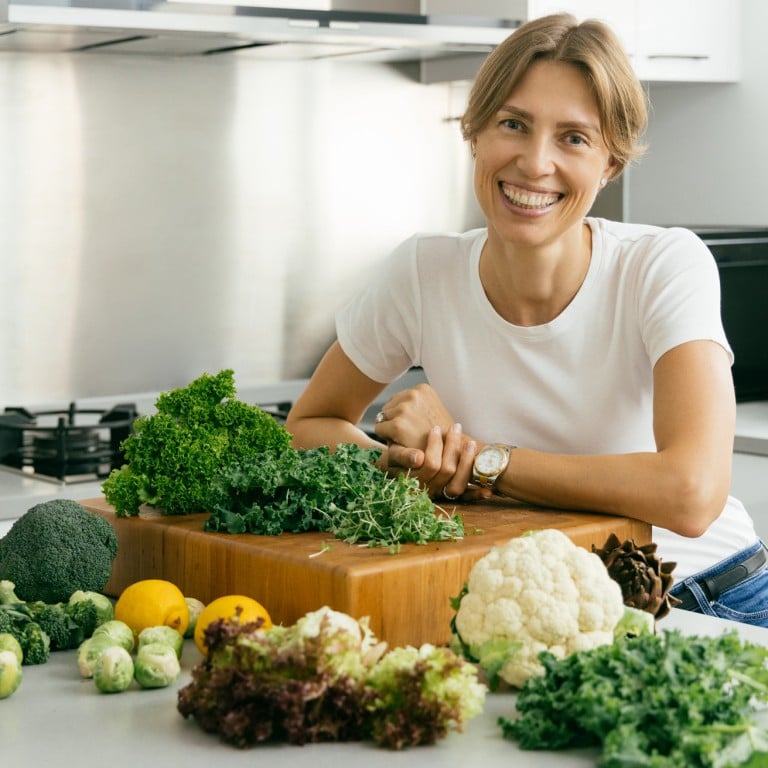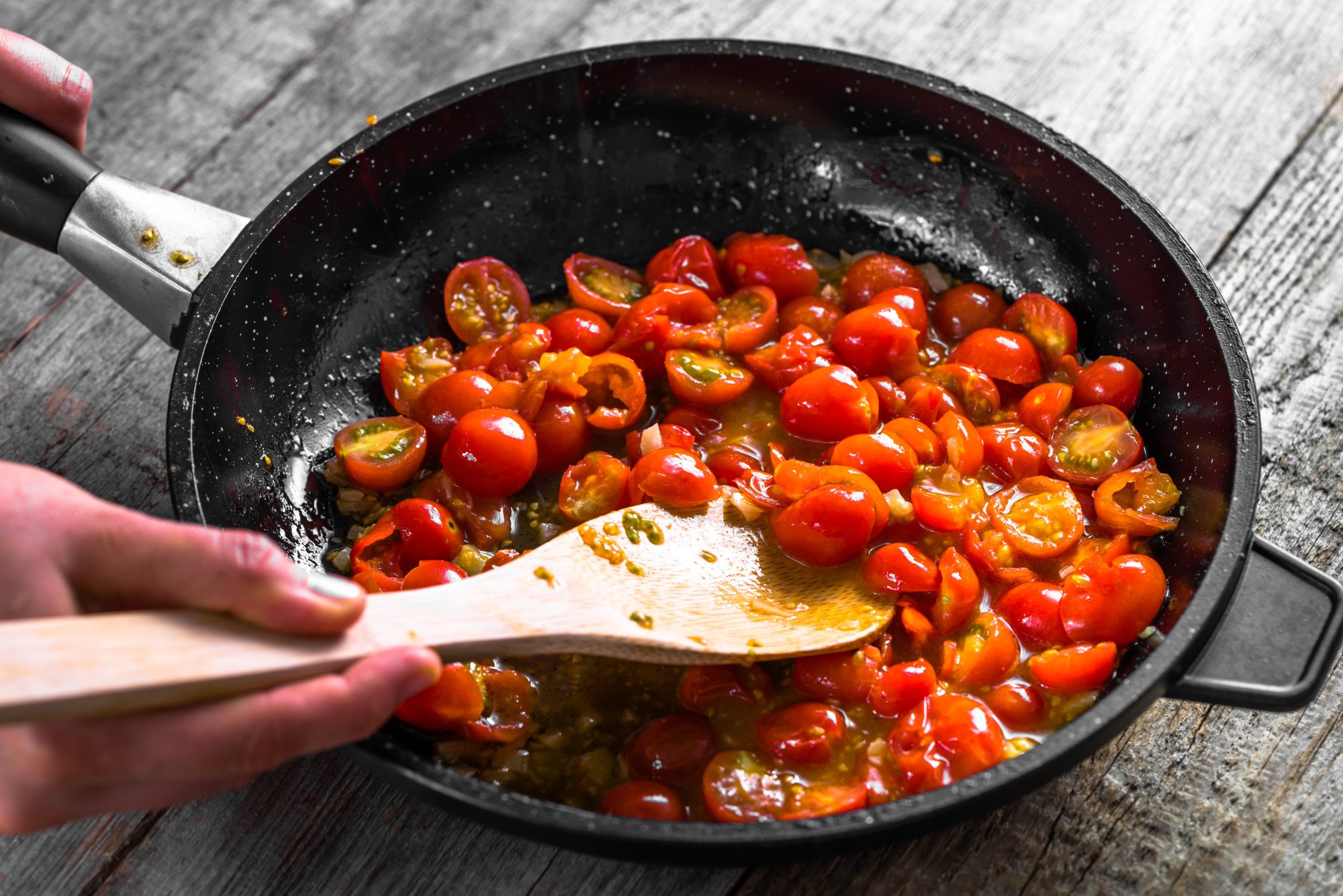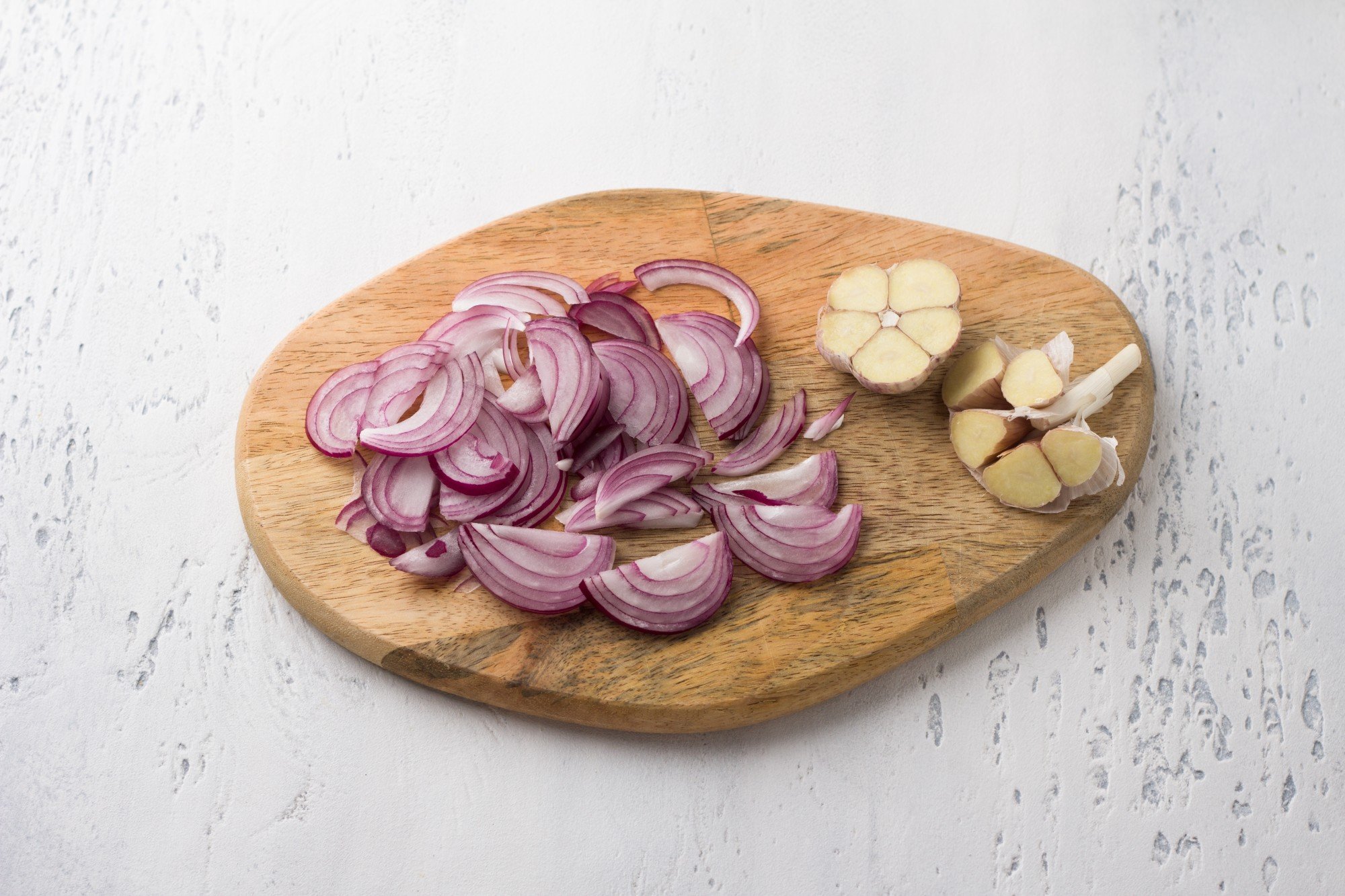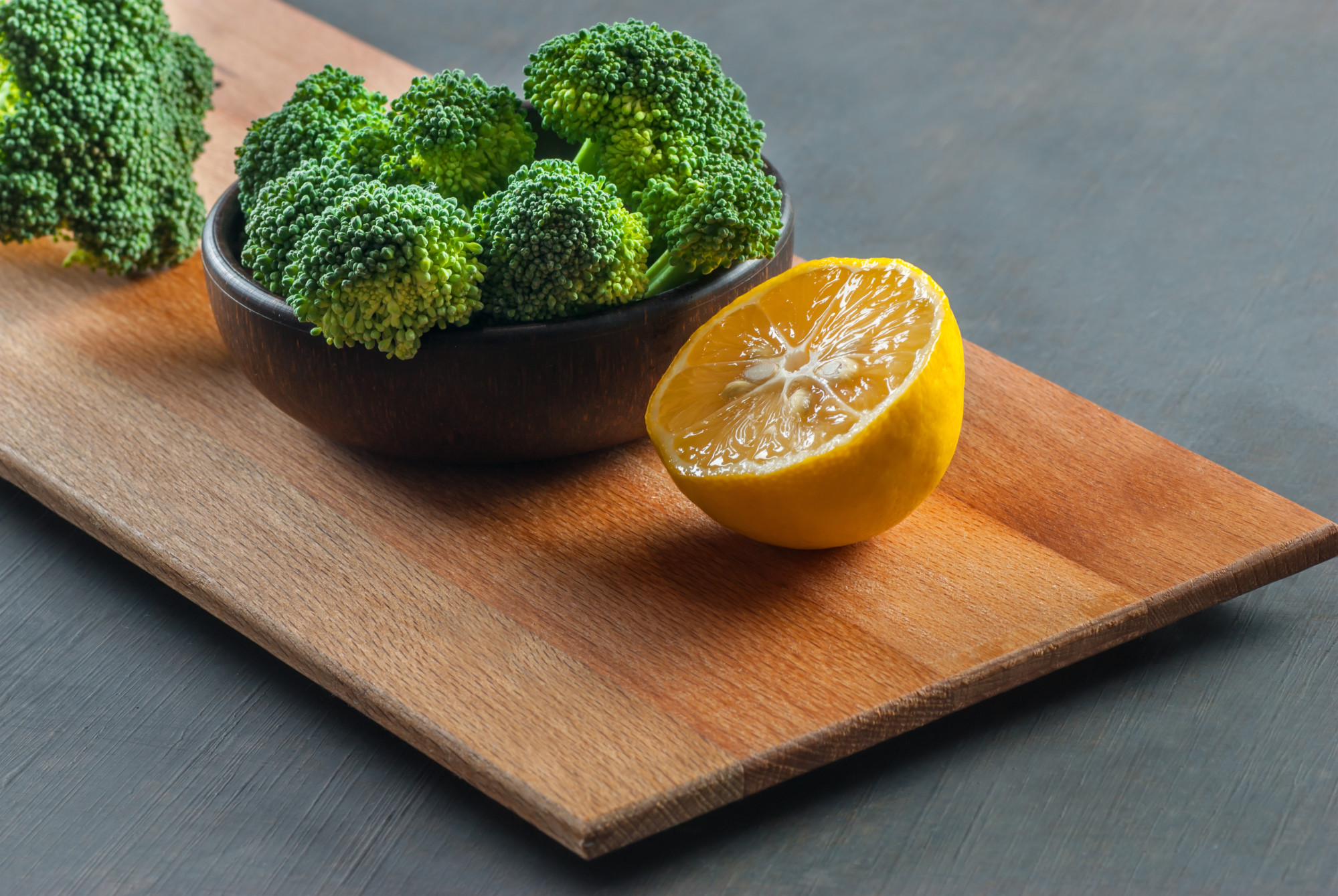
10 ways to maximise nutrients in your food: have green bananas, cook tomatoes, freeze your nuts, eat watermelon rind, and more – experts explain
- Make a plant-based diet even more beneficial by following these guidelines from nutritionists for how to eat them and what to combine them with
- Making the right choices can dramatically increase the nutritional benefits of these foods – in preventing cancer and diabetes and slowing ageing, for example
Plant foods are healthy, but are you getting all the nutrients that you can from them?
For instance, did you know that overcooking green vegetables, and storing nuts at room temperature, can take away some of their nutritional benefits. Or that, by combining certain foods, you can increase nutrient absorption with every bite?
These tips will help you supercharge your diet and make the already healthy foods you eat even more healthy.
1. Cook your tomatoes
Cooking tomatoes can increase the benefits of the lycopene they contain – a type of carotenoid which gives tomatoes their bright red hue.
“Lycopene is an antioxidant that protects your tissues, cells and DNA from damage caused by oxidative stress,” says Katia Demekhina, a nutritional therapist at the Integrated Medicine Institute in Hong Kong.

“When tomatoes are heated, lycopene is released from the fibres, making it more available for your body. Plus, the concentration of lycopene increases due to water loss during cooking.
“Consuming cooked tomato products rather than fresh tomatoes can help increase the intake of this antioxidant.”
Adding a small amount of fat, such as olive oil, while cooking tomatoes can increase lycopene absorption by up to 4.4 times.
Tomato soup: we boil down the health benefits for you
Demekhina also says that pairing tomato products with other carotenoid-rich foods, such as carrots, enhances lycopene’s effectiveness.
If you’re buying cooked tomatoes, she recommends choosing those in glass containers to avoid the potential leaching of chemicals like BPA, which is found in can linings and can be triggered by tomatoes’ acidity.
2. Chew your food slowly and mindfully
Taking the time to chew your food well stimulates your digestive enzymes to break down the food into smaller particles so that your digestive system can easily absorb their nutrients, says Michele Wisla, a Hong Kong plant-based culinary health coach. Wisla is an instructor for nutrition education programme Food for Life licensed by the Physicians Committee for Responsible Medicine (PCRM) in the United States.
Try mindful eating – and enjoy a better relationship with food
“There are some chemical reactions that take place as food is broken down, too, and some of the reactions then provide our bodies with phytochemicals,” she says.
“The carotenoids in carrots which are great for eye health are one example – they are easier to absorb when thoroughly broken down.
“If our food isn’t broken down well, we could suffer from malabsorption, which could cause bloating and indigestion.”

3. Let chopped garlic and onions sit for a bit
After chopping garlic, onions, and other alliums like shallots, leeks and spring onions, Wisla recommends leaving them for several minutes before eating or cooking them.
Chopping, crushing or mincing, she says, activates an enzyme in these vegetables called alliinase. After being exposed to the air, the alliinase turns into allicin, a sulphur compound that is said to have heart health, antimicrobial and anticancer benefits.
Reasons to eat onions and garlic, and how to banish garlic breath
But don’t wait too long before eating them, Demekhina adds. Allicin – along with other beneficial compounds found in allium vegetables – is relatively unstable and degrades over time.
4. Try these health-boosting food pairings
Certain foods are best eaten together to increase nutrient absorption.
Cruciferous vegetables and mustard, horseradish or watercress
Demekhina says that combining them with mustard, horseradish or watercress can increase their sulforaphane yield three to five times.

Cruciferous green vegetables with lemon juice or tomatoes
Demekhina says that adding a source of acid, such as a squeeze of lemon juice or a sliced tomato, can help enhance the absorption of iron from green vegetables such as kale, spinach and broccoli.
If you are eating these vegetables raw, adding lemon juice or vinegar will also increase the activity of the enzymes needed to form sulforaphane. The result is a doubling of sulforaphane levels compared to non-acidified vegetables, Demekhina says.

Chickpeas and onions
Chickpeas are high in zinc, and if you eat them with onions, Wisla says, the sulphur in the onions can help your body better absorb the zinc.
Turmeric and black pepper
According to Wisla, black pepper increases substantially the amount of curcumin in turmeric that the body can absorb. Curcumin is a powerful compound that is believed to have anti-inflammatory and cancer-preventive properties.
New to home cooking, couple’s Korean dishes delight the kids
5. Buy what’s in season
Apart from flavour, there are many reasons to go for seasonal produce when possible, says Demekhina.
“For starters, seasonal often means local, indicating that the produce doesn’t have to travel too far to reach your plate. The longer fresh produce has to travel, the larger the potential impact on its nutritional value.
“Second, seasonal produce is fresher. Since it’s harvested close to the time of consumption, it retains its peak nutritional value. The longer the time between harvest and consumption, the greater the likelihood of nutrient degradation.”
More than an apple a day: how eating more fruit and veg can keep us healthy
Demekhina points out that seasonal produce is grown in conditions suitable for its natural growth cycle. This means it receives the right amount of natural sunlight, water, and nutrients, contributing to optimal nutrient content.
6. Add healthy fats to vegetables
Vegetables such as leafy greens are abundant in vitamins A, E and K. These vitamins are fat soluble, meaning that we need fat to be able to absorb them, says Demekhina.
“Including healthy fats with your vegetables, such as those found in avocados, nuts, seeds and olive oil, ensures a more effective uptake of fat-soluble vitamins. So drizzle some olive oil on your vegetables, or add some avocado to your meals to enhance nutrient absorption.”

7. Avoid overcooking vegetables
Wisla advises against boiling or blanching vegetables, because it can destroy nutrients like vitamin C. Instead, she recommends lightly steaming them, as this cooking method helps to preserve their nutrients.
“Alternatively, use the lowest heat or the shortest time possible, so either sauté at the lowest temperature or stir fry quickly,” she suggests.
8. Don’t discard white watermelon rind
When eating watermelon, don’t just eat the juicy red flesh. The white rind has a host of health benefits, too.
Less junk, more whole foods: why what you eat affects your mental health
According to a 2020 study in the journal Molecules, watermelon rinds are packed with fibre, amino acids, minerals and antioxidants – bioactive compounds that may protect against cancer, diabetes and other serious chronic illnesses.
9. Keep nuts and seeds in the fridge
Refrigerating nuts and seeds, particularly if they are raw, protects their nutritional quality and prevents their fats from oxidising and turning rancid, says Demekhina.

“Oxidation, a chemical reaction triggered by exposure to oxygen, not only alters the taste of nuts, giving their fats a rancid flavour; it also makes these fats damaging to the body.
“Refrigeration effectively slows down the oxidation process, preserving the benefits of these nutrition powerhouses,” she adds.
Keep raw nuts in the freezer for a longer-term storage solution.

10. Eat bananas before they ripen
Green bananas contain good levels of resistant starch. This is starch that resists digestion in the small intestine and therefore does not raise blood sugar levels. From the small intestine it moves to the colon, where it ferments.
Resistant starch can help with weight loss, benefit heart health, and improve blood sugar management. Demekhina adds that it also acts as a prebiotic – food for the good bacteria in the gut – and keeps our gut healthy.
The benefits of green banana flour, a new superfood great for gut health
Prolonged storage of green bananas reduces their resistant starch levels and increases their glycaemic level (their ability to affect blood sugar), so don’t store them for too long before eating them.

